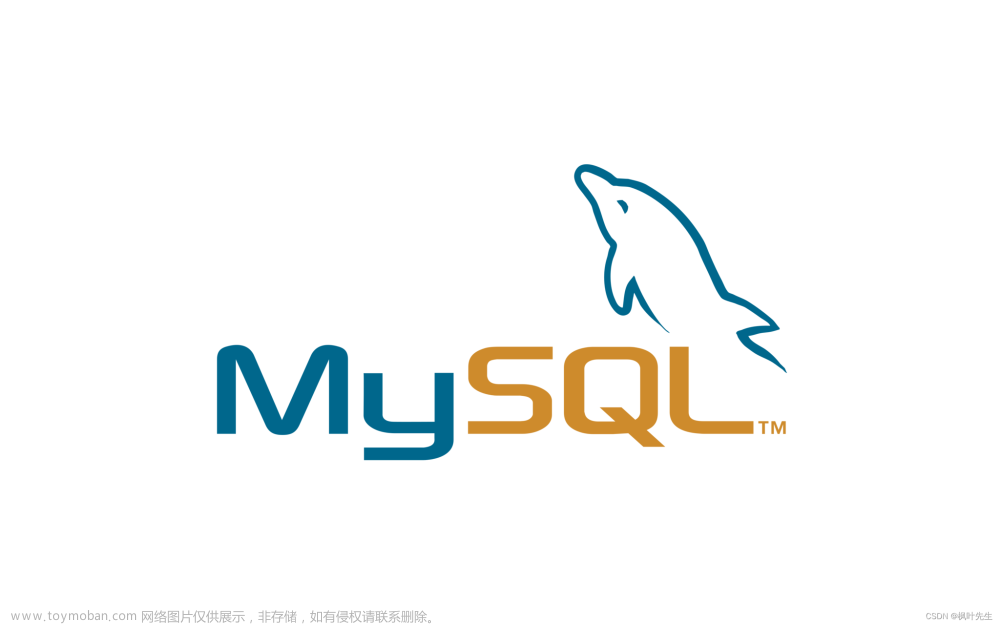1. 内连接查询
数据准备:
use mydb3;
-- 创建部门表
create table if not exists dept3(
deptno varchar(20) primary key , -- 部门号
name varchar(20) -- 部门名字
);
-- 创建员工表
create table if not exists emp3(
eid varchar(20) primary key , -- 员工编号
ename varchar(20), -- 员工名字
age int, -- 员工年龄
dept_id varchar(20) -- 员工所属部门
);
-- 给dept3表添加数据
insert into dept3 values('1001','研发部');
insert into dept3 values('1002','销售部');
insert into dept3 values('1003','财务部');
insert into dept3 values('1004','人事部');
-- 给emp表添加数据
insert into emp3 values('1','乔峰',20, '1001');
insert into emp3 values('2','段誉',21, '1001');
insert into emp3 values('3','虚竹',23, '1001');
insert into emp3 values('4','阿紫',18, '1001');
insert into emp3 values('5','扫地僧',85, '1002');
insert into emp3 values('6','李秋水',33, '1002');
insert into emp3 values('7','鸠摩智',50, '1002');
insert into emp3 values('8','天山童姥',60, '1003');
insert into emp3 values('9','慕容博',58, '1003');
insert into emp3 values('10','丁春秋',71, '1005');
内连接查询语法:
-- 语法:
-- 隐式内连接(SQL92标准):select * from A,B where 条件;
-- 显示内连接(SQL99标准):select * from A inner join B on 条件;
-- 查询每个部门的所属员工
select * from dept3,emp3 where dept3.deptno = emp3.dept_id;
select * from dept3 inner join emp3 on dept3.deptno = emp3.dept_id;
-- 查询研发部和销售部的所属员工
select * from dept3,emp3 where dept3.deptno = emp3.dept_id and name in( '研发部','销售部');
select * from dept3 join emp3 on dept3.deptno = emp3.dept_id and name in( '研发部','销售部');
-- 查询每个部门的员工数,并升序排序
select deptno,count(1) as total_cnt from dept3,emp3 where dept3.deptno = emp3.dept_id group by deptno order by total_cnt;
select deptno,count(1) as total_cnt from dept3 join emp3 on dept3.deptno = emp3.dept_id group by deptno order by total_cnt;
-- 查询研发部和销售部的所属员工
select * from dept3,emp3 where dept3.deptno = emp3.dept_id and name in( '研发部','销售部');
select * from dept3 join emp3 on dept3.deptno = emp3.dept_id and name in( '研发部','销售部');
-- 查询每个部门的员工数,并升序排序
select deptno,count(1) as total_cnt from dept3,emp3 where dept3.deptno = emp3.dept_id group by deptno order by total_cnt;
select deptno,count(1) as total_cnt from dept3 join emp3 on dept3.deptno = emp3.dept_id group by deptno order by total_cnt;
-- 查询人数大于等于3的部门,并按照人数降序排序
select deptno,count(1) as total_cnt from dept3,emp3 where dept3.deptno = emp3.dept_id group by deptno having total_cnt >= 3 order by total_cnt desc;
select deptno,count(1) as total_cnt from dept3 join emp3 on dept3.deptno = emp3.dept_id group by deptno having total_cnt >= 3 order by total_cnt desc;
2. 外连接查询
语法: 左外连接:left outer join:
select * from A left outer join B on 条件;

右外连接:right outer join:
select * from A right outer join B on 条件;

满外连接: full outer join:
select * from A full outer join B on 条件;

-- 外连接查询
-- 查询哪些部门有员工,哪些部门没有员工
use mydb3;
select * from dept3 left outer join emp3 on dept3.deptno = emp3.dept_id;
-- 查询哪些员工有对应的部门,哪些没有
select * from dept3 right outer join emp3 on dept3.deptno = emp3.dept_id;
-- 使用union关键字实现左外连接和右外连接的并集
select * from dept3 left outer join emp3 on dept3.deptno = emp3.dept_id
union
select * from dept3 right outer join emp3 on dept3.deptno = emp3.dept_id;
3. 子查询
子查询就是指的在一个完整的查询语句之中,嵌套若干个不同功能的小查询。通俗一点就是包含select嵌套的查询。
子查询可以返回的数据类型一共分为四种:
单行单列:返回的是一个具体列的内容,可以理解为一个单值数据;
单行多列:返回一行数据中多个列的内容;
多行单列:返回多行记录之中同一列的内容,相当于给出了一个操作范围;
多行多列:查询返回的结果是一张临时表。
-- 查询年龄最大的员工信息,显示信息包含员工号、员工名字,员工年龄
select eid,ename,age from emp3 where age = (select max(age) from emp3);
-- 查询年研发部和销售部的员工信息,包含员工号、员工名字
select eid,ename,t.name from emp3 where dept_id in (select deptno,name from dept3 where name = '研发部' or name = '销售部') ;
-- 查询研发部20岁以下的员工信息,包括员工号、员工名字,部门名字
select eid,age,ename,name from (select * from dept where name = '研发部 ')t1,(select * from emp3 where age <20)t2
ALL关键字:
与子查询返回的所有值比较为true 则返回true。
ALL可以与=、>、>=、<、<=、<>结合是来使用,分别表示等于、大于、大于等于、小于、小于
等于、不等于其中的所有数据。
ALL表示指定列中的值必须要大于子查询集的每一个值,即必须要大于子查询集的最大值;如果是
小于号即小于子查询集的最小值。同理可以推出其它的比较运算符的情况。
-- 语法:
-- select …from …where c > all(查询语句)
-- 等价于:
-- select ...from ... where c > result1 and c > result2 and c > result3
-- 查询年龄大于‘1003’部门所有年龄的员工信息
select * from emp3 where age > all(select age from emp3 where dept_id = '1003’);
-- 查询不属于任何一个部门的员工信息
select * from emp3 where dept_id != all(select deptno from dept3);
ANY与SOME关键字:
与子查询返回的任何值比较为true,则返回true。
ANY可以与=、>、>=、<、<=、<>结合是来使用,分别表示等于、大于、大于等于、小于、小于
等于、不等于其中的任何一个数据。
表示指定列中的值要大于子查询中的任意一个值,即必须要大于子查询集中的最小值。同理可以推
出其它的比较运算符的情况。
SOME和ANY的作用一样,SOME可以理解为ANY的别名。
-- 语法:
-- select …from …where c > any(查询语句)
-- 等价于:
-- select ...from ... where c > result1 or c > result2 or c > result3
-- 查询年龄大于‘1003’部门任意一个员工年龄的员工信息
select * from emp3 where age > all(select age from emp3 where dept_id = '1003’);
IN关键字:
IN关键字,用于判断某个记录的值,是否在指定的集合中。
在IN关键字前边加上not可以将条件反过来。
-- 语法:
-- select …from …where c in(查询语句)
-- 等价于:
-- select ...from ... where c = result1 or c = result2 or c = result3
-- 查询研发部和销售部的员工信息,包含员工号、员工名字
select eid,ename,t.name from emp3 where dept_id in (select deptno from dept3 where name = '研发部' or name = '销售部') ;
EXISTS关键字:
该子查询如果“有数据结果”(至少返回一行数据), 则该EXISTS() 的结果为“true”,外层查询执行
该子查询如果“没有数据结果”(没有任何数据返回),则该EXISTS()的结果为“false”,外层查询
不执行。
EXISTS后面的子查询不返回任何实际数据,只返回真或假,当返回真时 where条件成立。
EXISTS关键字,比IN关键字的运算效率高,因此,在实际开发中,特别是大数据量时,推
荐使用EXISTS关键字。
-- 语法:
-- select …from …where exists(查询语句)
-- 查询公司是否有大于60岁的员工,有则输出
select * from emp3 a where exists(select * from emp3 b where a.age > 60);
-- 查询有所属部门的员工信息
select * from emp3 a where exists(select * from dept3 b where a.dept_id = b.deptno);
4. 自关联查询
MySQL有时在信息查询时需要进行对表自身进行关联查询,即一张表自己和自己关联,一张表当
成多张表来用。
注意自关联时表必须给表起别名。
-- 语法:
-- select 字段列表 from 表1 a , 表1 b where 条件;
-- 或者
-- select 字段列表 from 表1 a [left] join 表1 b on 条件;
-- 创建表,并建立自关联约束
create table t_sanguo(
eid int primary key ,
ename varchar(20),
manager_id int,
foreign key (manager_id) references t_sanguo (eid) -- 添加自关联约束
);
-- 添加数据
insert into t_sanguo values(1,'刘协',NULL);
insert into t_sanguo values(2,'刘备',1);
insert into t_sanguo values(3,'关羽',2);
insert into t_sanguo values(4,'张飞',2);
insert into t_sanguo values(5,'曹操',1);
insert into t_sanguo values(6,'许褚',5);
insert into t_sanguo values(7,'典韦',5);
insert into t_sanguo values(8,'孙权',1);
insert into t_sanguo values(9,'周瑜',8);
insert into t_sanguo values(10,'鲁肃',8);
-- 进行关联查询
-- 1.查询每个三国人物及他的上级信息,如: 关羽 刘备
select * from t_sanguo a, t_sanguo b where a.manager_id = b.eid;
(日常美图时间)
 文章来源:https://www.toymoban.com/news/detail-444905.html
文章来源:https://www.toymoban.com/news/detail-444905.html
文章来源地址https://www.toymoban.com/news/detail-444905.html
到了这里,关于MySQL---多表联合查询(下)(内连接查询、外连接查询、子查询(ALL/ANY/SOME/IN/EXISTS关键字)、自关联查询)的文章就介绍完了。如果您还想了解更多内容,请在右上角搜索TOY模板网以前的文章或继续浏览下面的相关文章,希望大家以后多多支持TOY模板网!













